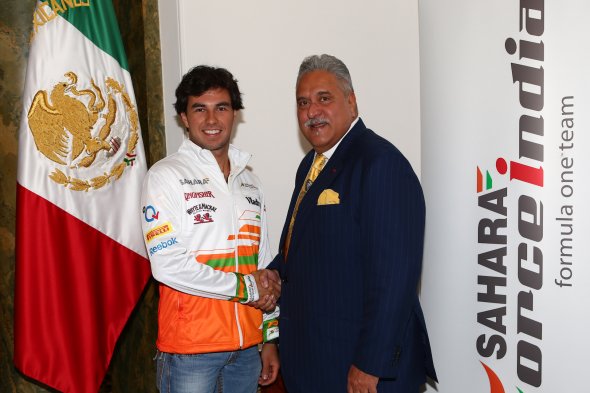Formula 1 has changed its numbering system for the first time since 1996. Here's a look at the numbers for 2014...
The announcement towards the end of 2013 that drivers would select permanent numbers has left the last month or so resembling an episode of fictitious game show Numberwang (That Mitchell and Webb Look, go and search on Youtube). Some drivers revealed their selection of three while others were secretive and waited for the FIA to confirm whether they had received their first choice. So what has each driver chosen and what history, if any, comes with their assigned number?
Numbers were assigned at will until 1973 when teams were given numbers roughly based on their championship position. The champions took #1 and #2 and their predecessors claimed the numbers of their successors. The system was changed in 1996 when numbers were assigned in accordance with a team’s finishing position in the previous year’s constructors’ championship. The reigning world drivers champion occasionally switched teams, meaning that he took the coveted #1 to his new squad, as happened in 2007 when Fernando Alonso moved from champions Renault to McLaren.
The system has now been changed for 2014, with drivers choosing numbers which will remain with them for the remainder of their careers. The hope is for drivers and teams not only to be able to market a certain number but also for it to become iconic in the history of the sport. Such a method has worked successfully in other categories, such as MotoGP, with Valentino Rossi indelibly associated with #46, while the sight of Marc Marquez throwing his bike around a corner is rapidly increasing the iconic status of his #93.
It will take a generation for drivers to become associated with certain numbers – assuming that they will be visible on the car – but here’s the selection of numbers, why it’s been chosen (if drivers have given a reason) and its presence within the history of the sport.
Drivers were permitted to select a number between 2 and 99 as the #1 is reserved for the reigning world champion. Sebastian Vettel has duly accepted to carry the #1 for a fourth successive season and it’s the most successful number in the history of the sport, carrying drivers to a total of 179 wins. Vettel’s choice for when he is eventually deposed as champion is #5 – which was long associated with Nigel Mansell – and was the German’s number during his first title winning campaign in 2010. The choice of #5 comes with past success as the number if second only to #1 in terms of wins and championships across the history of the sport.
Vettel’s new team-mate Daniel Ricciardo has unsurprisingly bypassed #2 and instead opted for #3. Ricciardo used #3 in karting and was a big fan of the late NASCAR legend Dale Earnhardt, who became associated with the number. In Formula 1 #3 was connected with Ken Tyrrell’s eponymous outfit, whose lead driver used the number from 1974 to 1995, as Tyrrell was never in championship contention and thus retained #3 for two decades.
Lewis Hamilton has opted to use #44, which he ran with during his karting days. It has also occasionally featured on special helmets, such as during the 2010 Monaco Grand Prix, when the top of his lid was transformed into a mock roulette wheel, with the ball falling on #44 (an impossible feat in reality, of course). Keke Rosberg carried #6 during his 1982 championship winning season and son Nico will use it for the remainder of his career.
Fernando Alonso has selected #14 as “it has been my lucky number since 1996, when, while I was 14, on July 14 and with kart number 14 I won the world championship.” Ferrari team-mate Kimi Räikkönen will use #7, although why did the Finn select that particular number?
“There’s no particular story linked to it,” he said. "It’s the number I already had last year and I saw no reason to change it. I like it which is good enough isn’t it?”
Romain Grosjean will continue to use #8, with the Frenchman carrying it during his brief stint in 2009 as well as during 2013. New team-mate Pastor Maldonado will use #13, which had previously not been handed out on the basis of superstition (somewhat odd for such a scientific sport). The number has only appeared twice in the history of the sport. Moises Solana used #13 on his BRM during the 1963 Mexican Grand Prix, while Divina Galica used the number during her unsuccessful attempt at qualifying for the 1976 British Grand Prix.
Jenson Button will be reunited with the #22 with which he claimed the 2009 world championship, although that only came about thanks to a technicality in Formula 1’s regulations. Brawn GP was allocated the final slot in the pit lane during 2009, thus leaving Force India to take over Honda’s previously assigned #18 and #19, with Brawn GP taking over #20 and #21. But Force India had begun marketing their numbers for that particular season, meaning that they retained #20 and #21, leaving Brawn GP with #22 and #23 for the remainder of the year. Button found championship glory with #22 – as did predecessor Hamilton – but it holds the record for the unluckiest number in history, with 274 retirements due to mechanical failures. Team-mate Kevin Magnussen will use #20 as he won the Formula Renault 3.5 Championship with the number last season.
Sergio Pérez used #11 in karting and during his maiden GP2 season and the Mexican will carry the number for the remainder of his Formula 1 career. Coincidentally, Pérez’s most common finishing position in three seasons of Formula 1 is 11th – he has achieved the feat 12 times – and he also finished in 11th place in the 2013 championship.
Undoubtedly the most iconic number in the history of Formula 1 is #27. It has also become associated with Gilles Villeneuve, despite the Canadian spending just 20 of his 67 races with the number (Alan Jones had the #27 on his Williams for three seasons, including his title winning 1980 season). Villeneuve carried #27 during a feisty 1981 season and used it again in 1982, but suffered fatal injuries following a qualifying accident at Zolder. Ferrari’s title drought meant that the #27 became associated with the scarlet cars, with the likes of Jean Alesi adding to the legend. 1989 champion Alain Prost moved to Ferrari for 1990, which left McLaren with the #27 for a single season. Ayrton Senna duly won the world title using the iconic number but the move to regulated numbers in 1996 meant that the #27 disappeared from view. For 2014, the championship frontrunners did not choose #27, which means that Force India’s Nico Hülkenberg has a chance to continue the legend – and perhaps open up a future with Ferrari?
Sauber's new recruit Adrian Sutil will become the first driver to use #99, stating that he simply likes the number, while team-mate Esteban Gutiérrez chose #21 as it’s his lucky number.
Toro Rosso’s Jean-Eric Vergne will use #25, and posted an old karting picture of him with the number (which is also the day on which he was born, 25th April). Rookie Daniil Kvyat will use #26 but has a long way to go to eclipse the record set by Jacques Laffite, who started 132 races with that number during a lengthy stint with Ligier.
Felipe Massa will use #19, which he carried in karting, while team-mate Valtteri Bottas – or should that be Val77eri Bo77as - will become the first driver to use #77 in the history of the sport. Coincidentally, Williams’s first formal entry into the Formula 1 championship – after Sir Frank’s previous attempts – came in 1977.
The #17 is steeped in superstition in Italian culture yet Ferrari backed Jules Bianchi has opted for the number for the remainder of his career, although only after his first three choices - #7, #27, #77 – were taken by rivals.
Recently confirmed Marussia driver Max Chilton has yet to reveal his race number, while naturally two more will be selected once Caterham complete the 2014 driver line-up.
2014 entry list:
1* – Sebastian Vettel | Red Bull
3 – Daniel Ricciardo | Red Bull
44 – Lewis Hamilton | Mercedes
6 – Nico Rosberg | Mercedes
14 – Fernando Alonso | Ferrari
7 – Kimi Raikkonen | Ferrari
8 – Romain Grosjean | Lotus
13 – Pastor Maldonado | Lotus
22 – Jenson Button | McLaren
20 – Kevin Magnussen | McLaren
27 – Nico Hulkenberg | Force India
11 – Sergio Perez | Force India
99 – Adrian Sutil | Sauber
21 – Esteban Gutierrez | Sauber
25 – Jean-Eric Vergne | Toro Rosso
26 – Daniil Kvyat | Toro Rosso
19 – Felipe Massa | Williams
77 – Valtteri Bottas | Williams
17 – Jules Bianchi | Marussia
TBA - Max Chilton | Marussia
TBA - Caterham
TBA - Caterham
* For the duration of his career, Vettel has selected #5


























